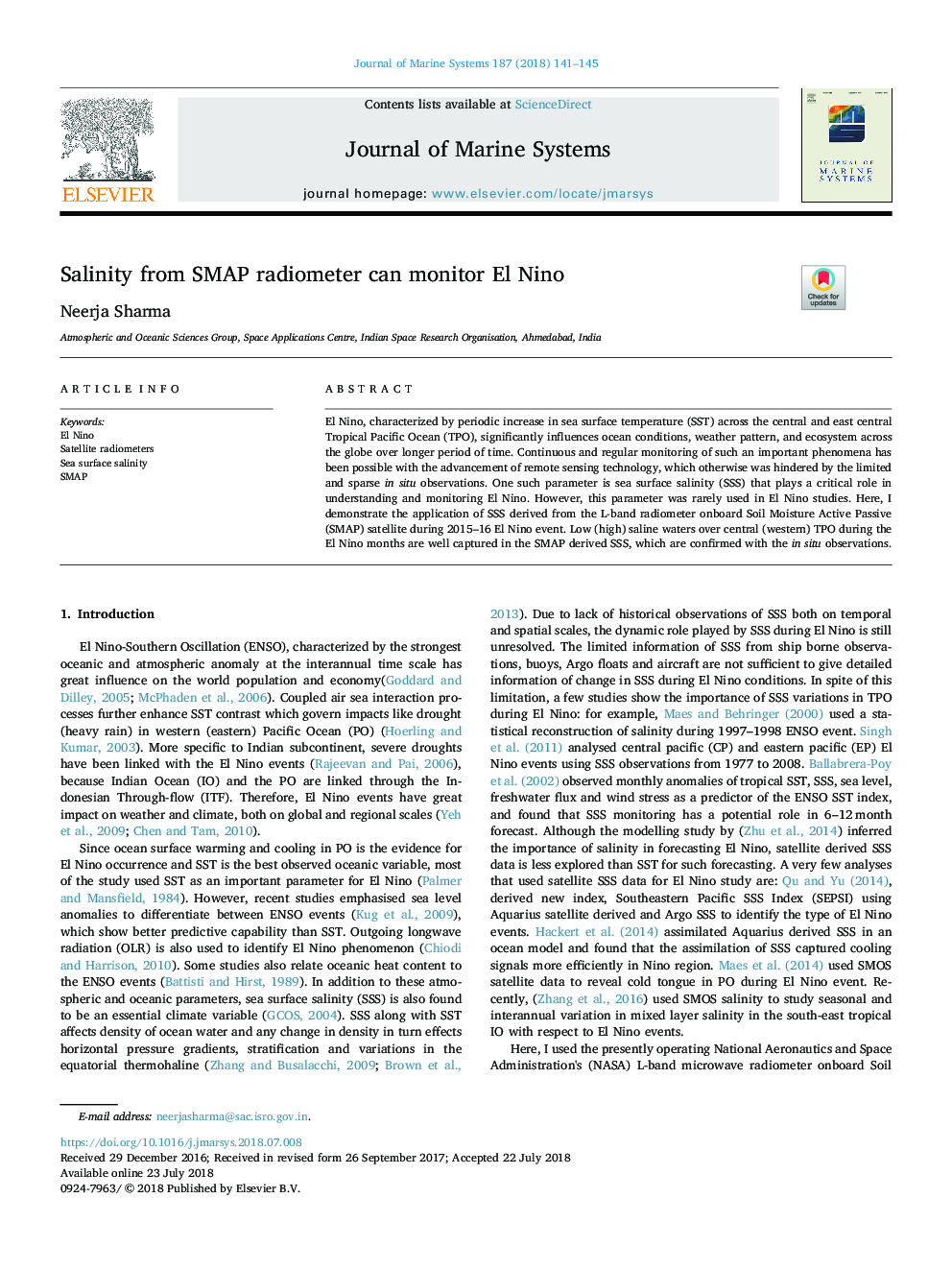| Article ID | Journal | Published Year | Pages | File Type |
|---|---|---|---|---|
| 8885897 | Journal of Marine Systems | 2018 | 5 Pages |
Abstract
El Nino, characterized by periodic increase in sea surface temperature (SST) across the central and east central Tropical Pacific Ocean (TPO), significantly influences ocean conditions, weather pattern, and ecosystem across the globe over longer period of time. Continuous and regular monitoring of such an important phenomena has been possible with the advancement of remote sensing technology, which otherwise was hindered by the limited and sparse in situ observations. One such parameter is sea surface salinity (SSS) that plays a critical role in understanding and monitoring El Nino. However, this parameter was rarely used in El Nino studies. Here, I demonstrate the application of SSS derived from the L-band radiometer onboard Soil Moisture Active Passive (SMAP) satellite during 2015-16 El Nino event. Low (high) saline waters over central (western) TPO during the El Nino months are well captured in the SMAP derived SSS, which are confirmed with the in situ observations.
Keywords
Related Topics
Physical Sciences and Engineering
Earth and Planetary Sciences
Oceanography
Authors
Neerja Sharma,
